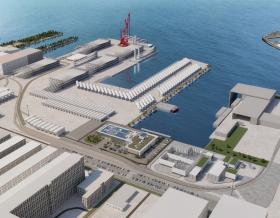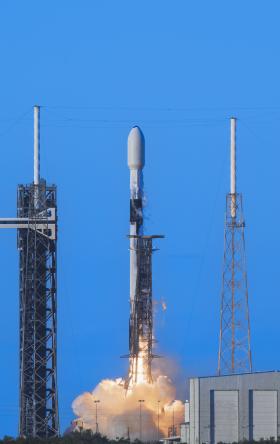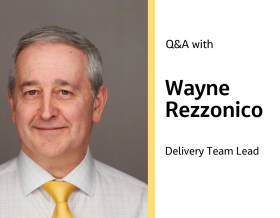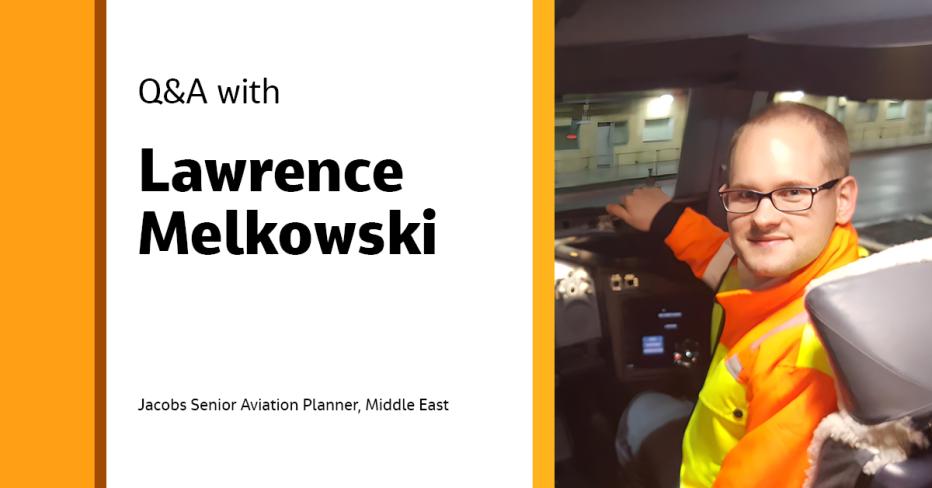
Our Senior Aviation Planner in the Middle East Lawrence Melkowski has had a diverse career in aviation, having held positions such as terminal manager, airfield duty manager, aerodrome safeguarding specialist and now aviation planner.
With his extensive knowledge in terminal and airfield operations, aerodrome safeguarding, airfield works and aviation safety, Lawrence is equipped to handle the demands of complex and challenging airports.
We talked with Lawrence about aviation infrastructure planning in the Middle East. We discussed the unique factors that influence it, the innovative practices and new technologies being used and the challenges faced in airport development and expansion as the Middle East strives to become one of the fastest-growing aviation markets.
Hi, Lawrence! Tell us a bit about yourself and your role at Jacobs.
A small part of me runs on aviation fuel as it's been a prevalent theme in my family history. My grandfather used to work for Martin-Baker assembling ejector seats for fighter aircraft, my grandmother was a technician making fuel tank linings for aircraft including Concorde and my mother worked for British Airways throughout my childhood.
My first foray into aviation was working as a terminal manager at London City Airport. Although I quickly developed people skills with passengers, airlines and their ground handlers, I was more interested in what was happening behind the scenes. I joined the airfield operations team as an airfield duty manager and it was one of the most delightful jobs I have ever had. Being a small airport, each day was different and my job involved everything from repairing defects in the runway to being in the (old) air traffic control tower, coordinating with air traffic control and maritime pilots the movement of tall ships on the River Thames as they passed behind the eastern end of the runway.
As the 30th anniversary of the airport approached, the runway pavement and airfield infrastructure required some major work and I spent 18 months working permanent night shifts on a runway rehabilitation project. I was responsible for the airfield handover to and hand back from the contractor and giving technical support and quality assurance – ensuring the runway was ready each morning for the first arrival!
After successfully completing that project, I was in search of a new challenge and moved to Heathrow Airport, joining their Airfield Operations department. In terms of passenger numbers, aircraft movements and cargo tonnage, Heathrow and London City airports could not be more different. It was a steep learning curve getting to grips with how to keep the operation going when you lack airfield capacity – proactivity and quick decision making is the name of the game! During my time there, I held operational and back-of-house roles, which provided me with a comprehensive understanding of how the airport operates within and beyond the perimeter fence.
As COVID-19 began to stifle our lives and the aviation industry in particular, I decided to use the reduced working hours I had at the time to my advantage and enrolled in an airport planning and management postgraduate degree program. That enabled me to join Jacobs as an airport planner. I started my journey in the U.K. and finally ended up in Dubai. Ultimately, my role is to ensure an aerodrome has the right tools to operate safely, efficiently and to the expectations of the operator and their key stakeholders.
What unique factors influence aviation infrastructure planning in the Middle East region?
Climate and geography are some of the most influential factors. Given that the Middle East is hot, it can affect various aspects, including runway lengths, especially if an aerodrome is situated at a high altitude. Thinner air requires aircraft to take off at a faster speed to generate the same amount of lift necessary for a safe departure. For this, a longer runway is often required. Otherwise, some passengers and their bags may have to be offloaded to reduce weight!
On the other hand, when it rains, water can collect and move downhill very quickly due to the unsaturated ground. To maintain safe and continuous operations, sufficient space on the airfield is required to attenuate stormwater with ditches, swales and ponds. It is not only essential to protect buildings, pavements and complex infrastructure, such as aeronautical ground lighting but also to reduce the wildlife activity on the airfield after a rain shower.
Thankfully, most airports in the region have sufficient space to accommodate this. However, airports can also be quite restrictive in their surrounding areas. The airspace around every aerodrome is safeguarded against the local development of buildings or the installation of structures that could compromise flight safety. These are known as obstacle limitation surfaces. Some of these surfaces can be especially restrictive in the Middle East, significantly impacting on and off-airport developments.
What new technologies or innovations are being used in aviation planning?
We tend to use our in-house developed tools or specialized off-the-shelf software to do our work which is common across our field but also understood by and compatible with our client’s software. However, recently our colleagues in the U.K. have developed a tool that we are testing that will enable us to create 3D obstacle limitation surfaces in AutoCAD Civil 3D within seconds. Previously, this would have taken us days to do and will therefore greatly improve our productivity.
We also have to accommodate industry innovations and technological developments into airport master plans, such as the increasing interest in biometric technology in passenger terminals, automation in cargo warehouses and alternative fuels for aircraft, such as sustainable aviation fuels (SAFs) and hydrogen. More and more airports, especially those within the Middle East, are enquiring about how we can integrate new technology and innovation into their existing and future operations.
What are the major challenges in airport development and expansion in this region, and how do you address them?
Modern commercial aviation, as we know it today, is relatively new to the region. Although the pace of change in some Gulf Cooperation Council (GCC) countries has been impressive, to some extent, it has now plateaued and reached a level of maturity. Other countries within the region are still finding their feet or about to grow exponentially.
Little to no previous master planning is a major challenge. In contrast to some areas that mandate airports to possess a master plan, many airports in the Middle East either possess an outdated one or none at all. Based on my experience with various projects, subsequent development often lacks a clear direction or vision for the future after the initial construction of an airport. When an airport is about to undertake significant expansion, it is often necessary to take one step back in reconfiguring land uses, for example, before taking two steps forward and being able to accommodate the future required infrastructure.
Although most countries follow the standards and recommended practices set by the International Civil Aviation Organization, their respective civil aviation authorities may still need to develop a comprehensive set of regulations and guidance for planners to follow. This requires extensive stakeholder engagement to achieve alignment and approvals from regulatory authorities – adding time to project schedules.
“Aviation is a complex ecosystem where even the smallest projects can involve many stakeholders. It is, therefore, essential to understand and respect the cultural subtleties between these different groups of people. Every airport project is unique to the client, the intended end users and its geographical location.”
When planning, designing and developing airport facilities and services, do you consider the cultural and social elements specific to the Middle East?
It goes without saying that whichever region a project is located in, we always consider these elements. For example, in the early stages of a project, this is critical to the approach and planning of stakeholder engagement and building a rapport with those who will ultimately enable us to deliver a successful project. Aviation is a complex ecosystem where even the smallest projects can involve many stakeholders. It is, therefore, essential to understand and respect the cultural subtleties between these different groups of people.
Every airport project is unique to the client, the intended end users and its geographical location. In the Middle East, when planning terminal facilities, we will typically plan for a mosque, prayer rooms and separate male and female security channels. We will also try to understand local behaviors in planning passenger facilities. For example, in the Middle East, there is a high usage of private vehicles which may result in a need for more curb length at the terminal forecourt and more car parking spaces.
How can airport planning effectively balance economic viability with sustainable and environmentally responsible practices?
In aviation, lowering costs and being environmentally responsible can go hand in hand. For example, in the geometric planning of a taxiway network and the location of a passenger terminal building, we can significantly impact the taxi times and distances of aircraft traveling between a runway and a terminal. If we can reduce this, we will reduce what needs to be built and how much fuel the aircraft burns, lowering costs for the airport operator and the airline – not to mention a quicker journey for passengers and a reduced environmental impact.
When working on a brownfield site, we may reuse or rehabilitate as much pavement as possible by integrating what has already been built with what is needed in the future. In this respect, we may define planning activity levels where an airport's expansion is constructed as required – preventing surplus capacity, especially when demand forecasts are optimistic!
We can also consider how best to integrate future infrastructure needs, such as tanks for SAFs or the storage of hydrogen and the benefits of getting this infrastructure planned early. If rework can be reduced or removed altogether, it will be more economically viable and therefore, more likely to happen.
Can you share any details of an exciting airport infrastructure development and modernization project in the region?
A large international airport in Saudi Arabia is set to undergo a major transformation and expansion in the not-too-distant future. The airport will significantly grow and feature several new terminal buildings, additional runways, expanded cargo and general aviation operations. Existing and new facilities will be connected by a central mobility spine that will also accommodate the public realm.
We have been involved with this project right from the start. It is a truly ambitious project that is very complex due to existing airspace constraints and much of the required land already occupied by third parties. To accommodate the expansion, these businesses and assets will have to be moved in time for much of the new infrastructure to be ready as per the deadline. We’re working with the client to understand how they can turn this vision into a reality.
What do you think about the potential of introducing new technologies like autonomous vehicles or electric aircraft in the aviation sector?
I am still skeptical about the use of autonomous vehicles at airports. While I acknowledge their potential benefits in certain situations, I do not see them entirely replacing conventional vehicles with drivers very soon. The airside environment of an airport can be chaotic and vehicles operating around aircraft must do so with caution. The technology must be more advanced to operate in this dynamic environment. There are only limited applications for them. I anticipate their utilization to be limited in the foreseeable future.
I have a similar opinion about electric aircraft. Unless there is a step change in battery technology, I do not see their widespread business case and application. These aircraft are more likely to be small vertical take-off and landing (eVTOL) aircraft or drones with limited payload capacity and range. Due to the operational complexities and limited use cases, I do not see them featured at a commercial airport any time soon. I am happy to be proven wrong, however.
-
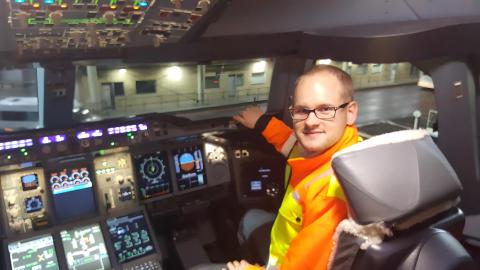
In the cockpit of an Emirates A380 at Heathrow Airport
-
On the runway at London City Airport carrying out an early morning inspection, prior to handing over the airfield to air traffic control
-
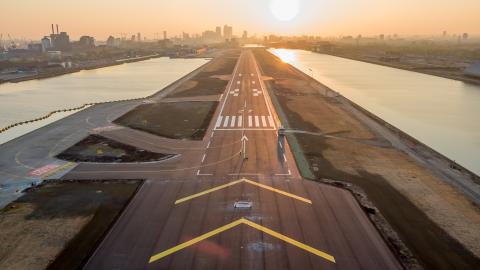
The completed runway rehabilitation project at London City Airport in 2017
Can you tell us how the work you do is helping solve our clients’ biggest challenges?
The COVID-19 pandemic hit aviation hard and although the industry has recovered well, a lot has changed and we now see the emergence of some key market drivers for our clients. There is a clear desire and need to be even more environmentally responsible, accommodate growth, address aging infrastructure and implement secure digital solutions. As aviation continues to bounce back and grow impressively beyond pre-pandemic levels in the region, we can move our three growth accelerators forward by helping our clients implement solutions that align with our purpose to create a more connected and sustainable world.
People would be surprised to know that …
Aviation is only one of my passions. I am also a bit of a petrolhead. I don’t know where it came from because when growing up, none of my family was into cars. From a young age, I always watched motorsport on TV, from Formula 1 to truck racing (yes, it really is a thing!) and read motoring magazines from cover to cover. In fact, when I was in my late teens, I even appeared on the front page of a well-known weekly motoring magazine in the U.K., having been part of a focus group that had just reviewed what was the British Motor Show (before it stopped following the financial crisis of 2008). Now, whenever possible, I like to travel and enjoy combining my trips with cars in some way, whether it’s a show, a motor race or camping at an event such as the Le Mans 24 Hours.
What do you enjoy most about being part of #OurJacobs?
The breadth of capabilities of our company never ceases to amaze me. It can sometimes be the case that a certain specialist is required on a specific project to either provide some input or opinion. Quite often, when we think that we may need to subcontract work out, we actually have someone within the company who can help. I find that very impressive and believe this strength helps set us apart from our competitors.
About the interviewee

Lawrence Melkowski has enjoyed over ten years in aviation, originally in civil aerodrome operations and later in planning. Always ready for a challenge, he has extensive experience and knowledge in terminal and airfield operations, aerodrome safeguarding, airfield works and aviation safety at challenging, complex airports. Originally from the U.K., Lawrence graduated from Cranfield University with a master’s degree in airport planning and management. He now applies his skills and expertise across the region and beyond from Dubai.
You might be interested in...
Join #OurJacobs team
What drives you drives us as we work to build a better world – together. At Jacobs, every day is an opportunity to make the world better, more connected, more sustainable. We’re always looking for dynamic and engaged people to join our team. Bring your passion, your ingenuity and your vision.

